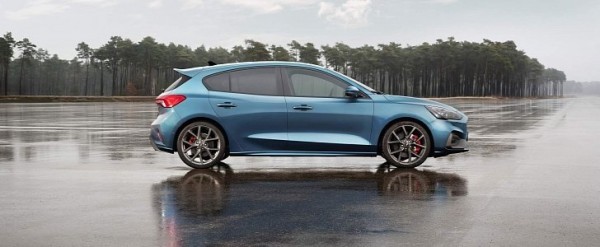
Interestingly enough, it’s the gasoline-fueled engine that develops more torque at 420 Nm (310 pound-feet) compared to 400 Nm (295 pound-feet). Acceleration to 100 km/h (62 mph) takes 7.6 seconds for the EcoBlue and sub-6 seconds for the EcoBoost. Top speed also favors the gasoline option, which is capable of 250 km/h (155 mph) as opposed to 220 km/h (137 mph).
Both engines are matched from the get-go to a short-throw manual with six gears. An automatic option will be available in no time, and starting next month, the Focus ST will be offered as a station wagon. The most affordable configuration of the longroof starts at £30,595 in the United Kingdom while the EcoBoost retails at £31,995 for the hatchback and £33,095, respectively.
In addition to the type of fuel, the EcoBlue and EcoBoost differ in terms of handling. The turbo diesel features torque vectoring while the turbo gasoline levels up to an electronic limited-slip differential. Because carving corners is the specialty of the Focus ST, the Blue Oval treats customers to driving mods such as Track when equipped with the Performance Pack.
Speaking of the upgrades package, Ford of Europe also throws in rev-matching technology, gear shift indicator, and continuously controlled damping for even better control. Taking inspiration from the ST-Line, the ST features an even sharper exterior complemented by Recaro seats up front, a flat-bottom steering wheel, aluminum pedals, and technological goodies such as 8.0-inch SYNC infotainment with Apple CarPlay and Android Auto.
The question is, who would choose the Ford considering the Hyundai i30 N Performance has an on-the-road price of £29,495 in the United Kingdom?








